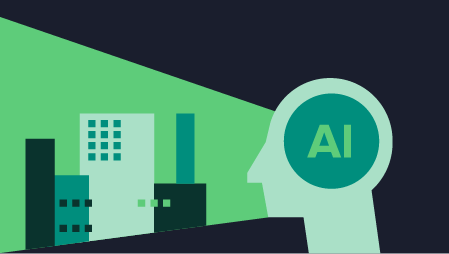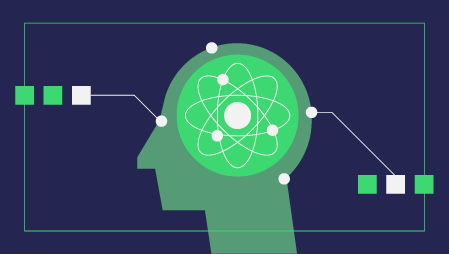Patients’ wellbeing should be the central focus of healthcare. Unfortunately, this isn’t always the case. Studies show that doctors spend almost half their time on data entry and more than half of their workdays managing records instead of caring for patients. Add this lost time to the fact that healthcare in the United States is already understaffed – averaging 2.5 healthcare practitioners to every 1,000 patients – and it’s easy to see that something’s got to give to bring focus back to what really matters: actual patient care.
Automation technologies, such as Robotic Process Automation (RPA), offer a chance to relieve overburdened healthcare practitioners of the time-intensive administrative work detracting from time spent with patients. RPA software allows users to configure “bots” to take on repetitive tasks by emulating and integrating the actions of a human within digital systems to perform a business process, eliminating often repetitive tasks from a person’s workload. In healthcare, RPA could be used to help facilitate appointments, manage billing and find and copy records, saving providers time and resources
This comes as no surprise. For nearly a decade, healthcare professionals have been introduced to “quick-fix” automation solutions that have failed to work cohesively with existing systems. As a result, these implementations have largely failed – causing distrust amongst employees about the value of new technologies.
Here, we debunk common myths about RPA in healthcare to explain how technology can free up time and resources spent on administrative tasks:
Myth 1: There’s no difference between RPA and old-school tools
There’s a common misconception that RPA is nothing more than a newer version of screen scraping and Extract Transform Load (ETL) tools that proved to deliver little value to healthcare providers. Screen scraping, which debuted more than a decade ago, relied on a computer program to simply copy data from a website or other program into a new location. Limited to this one capability, the technology frustrated physicians who required a solution that could also graph, export and sort the data.
RPA brings this functionality and can work across programs, applications, and websites to gather the data and present it in ways that are useful and convenient. RPA platforms contain AI capabilities and use AI Computer Vision, which can detect screen elements with a precision that matches the human eye. The data pulled by software robots are not only more accurate than data pulled from legacy tools but are of a much higher quality than old-school screen scraping could produce.
When applied to a process such as data collection, RPA collects and organizes the data in a way that is quick and easy for healthcare practitioners to understand, saving them time verifying heaps of data.There’s a common misconception that RPA is nothing more than a newer version of screen scraping and Extract Transform Load (ETL) tools that proved to deliver little value to healthcare providers. Screen scraping, which debuted more than a decade ago, relied on a computer program to simply copy data from a website or other program into a new location. Limited to this one capability, the technology frustrated physicians who required a solution that could also graph, export and sort the data.
RPA brings this functionality and can work across programs, applications, and websites to gather the data and present it in ways that are useful and convenient. RPA platforms contain AI capabilities and use AI Computer Vision, which can detect screen elements with a precision that matches the human eye. The data pulled by software robots are not only more accurate than data pulled from legacy tools but are of a much higher quality than old-school screen scraping could produce.
When applied to a process such as data collection, RPA collects and organizes the data in a way that is quick and easy for healthcare practitioners to understand, saving them time verifying heaps of data.Myth 2: Healthcare should just wait for AI
Across healthcare, there’s this idea that AI will one day enable a fully integrated health system that offers a unilateral view of patient records along with a democratized health data platform. While this is certainly something to strive for, the reality is it’s years away. Waiting for an all-in-one solution driven by AI will ultimately slow down progress in healthcare, not advance it.
Enterprise AI is not going to be delivered by one technology or one vendor; it is going to come from many different solutions to fix many different problems. The challenge is, then, how to get all these different systems to work in concert.
Introducing new technologies on top of inefficient processes can be challenging. Too often organizations think that AI can be used immediately out of the box, which is the reason many AI projects fail. Take, for example, electronic health records (EHRs). A study conducted earlier this year revealed 40 percent of patients with EHRs reported concerns about accuracy, and 21 percent reported that they or a family member have noticed errors in their records. Yet if AI is deployed, it is likely being fed this inaccurate health record data, meaning it will also produce inaccurate results.
To ensure data integrity, providers must understand data flows and know the end goal of the process to be able to get from point A to point B. RPA forces businesses to look at their processes and helps make them more efficient. RPA works across systems and bridges the gap between legacy healthcare technology and the next wave of AI-informed solutions. Through RPA, old and new systems can work in sync to ensure that data is not lost and processes run optimally. Once in place, digital workers can quickly and accurately collect (and correct) data, ensuring that AI, once introduced, can reach its full potential.
Myth 3: Healthcare already has automation tools
As previously mentioned, healthcare is no stranger to automation. The problem is that providers already think that they have enough automation technologies in place and that throwing RPA in the mix will not significantly improve processes.
Current healthcare automation tools tend to be project- or task-based, meaning that they only provide a solution to one very specific problem. For example, nurses often feed a medical history report into an AI tool but then have to retype the results into an EHR. This is an example of how automated steps don’t amount to true automation. True automation occurs when business processes are optimized from beginning to end, without the need to stop in the middle.
RPA offers a complete solution, without the need to eliminate any of the one-off solutions in already in place. Software robots can seamlessly jump from one tool to the next, uniting the process and eliminating the manual steps in between each task. RPA simultaneously makes old automation tools interoperable and lays the groundwork for incorporating new technology solutions so that they can work together to achieve efficient, productive results.
Focus on what’s important: the patients
As patient numbers grow, healthcare providers will be increasingly challenged with managing inventory, digitizing patient files and claims processing.
Despite common myths and misconceptions surrounding the role of RPA in healthcare, RPA could play a major role in eliminating repetitive manual tasks, while also uniting disparate systems, giving healthcare professionals much-needed time back to focus on what they do best: care for patients.



